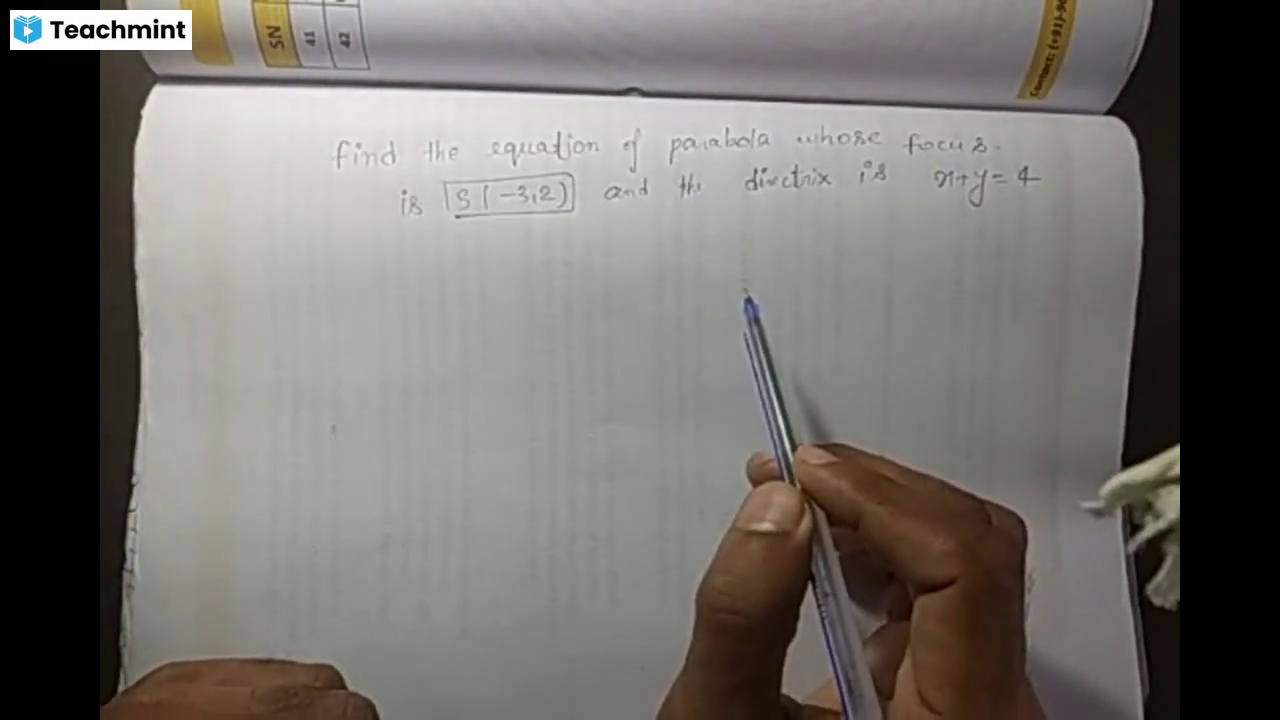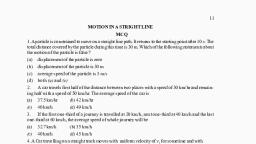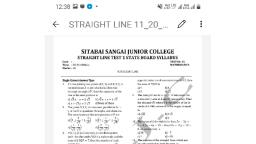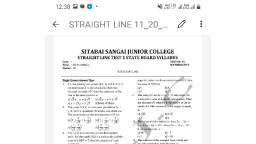Question 1 :
The points $(-2, -1), (1, 0),(4, 3),$ and $(1, 2)$ are the vertices
Question 2 :
The slope of the line joining the point (-8,-3)and (8,3) is
Question 4 :
The points $(a, 0), (0, b)$ and $(1, 1)$ will be collinear if
Question 6 :
Which of the following points are $10$ units from the origin?
Question 7 :
The area of the triangle formed by the points (a,b+c), (b,c+a) and (c,a+b) is
Question 8 :
The distance between $M(-1,5)$ and $N(x,5)$ is $8$ units. The value of $x$ is:
Question 9 :
The vertices of a $\triangle {ABC}$ are $A(-5,7),B(-4,-5)$ and $C(4,5)$. Find the slopes of the altitudes of the triangle.
Question 10 :
The condition for the points (x,y), (-2,2) and (3,1) to be collinear is
Question 11 :
The slope of the line joining $(1, 2) $ and $(1, 3)$ is ____
Question 12 :
Find the slope of line $l$, which is the perpendicular bisector of the line segment with endpoints $(2,0)$ and $(0,-2)$.
Question 13 :
Find the slope of the line passing through the following points $P(1,-1)$ and $Q (-2,5)$
Question 14 :
The distance between the points $(8, -2)$ and $(3, -6)$ is $\sqrt{40}$ units.<br/>If true then enter $1$ and if false then enter $0$.<br/>
Question 16 :
The area of a triangle is $5$. Two of its vertices are $(2, 1)$ & $(3, -2)$. The third vertex lies on $y = x + 3$. The third vertex can be
Question 17 :
The slope of a straight line passing through A( -2, 3) is -4/3. The points on the line that are 10 units away from A are <br>
Question 18 :
$a$ and $b$ are real numbers between $0$ and $1.$ $A\equiv(a, 1), B\equiv(1, b)$ and $C\equiv(0, 0)$ are the vertices of a $\triangle ABC$.<br/><br/>If the $\triangle ABC$ is isosceles with $AC = BC$ and $5(AB)^{2} =2(AC)^{2},$ then<br/>
Question 19 :
The distance between the points $A(-6, 7)$ and $B(-1, - 5)$ is.<br/>
Question 20 :
The three vertices of a parallelogram ABCD, taken in order are $A(1, -2)$, $B(3,6)$ and $C(5,10)$. Find the coordinates of the fourth vertex D.<br>
Question 21 :
AOBC is a rectangle whose three vertices are A (0, 3) O (O, 0) and B (5, 0). The length of its diagonal is 
Question 23 :
lf the line joining the points $(\mathrm{a}\mathrm{t}_{1}^{2},2\mathrm{a}\mathrm{t}_{1}),(\mathrm{a}\mathrm{t}_{2}^{2},\ 2\mathrm{a}\mathrm{t}_{2})$ is parallel to $\mathrm{y}=\mathrm{x},$ then $\mathrm{t}_{1}+\mathrm{t}_{2}=$ <br/>
Question 24 :
A tangent to the curve $y = f(x)$ at $p(x, y)$ meets $x - axis$ at $A$ and $y-axis$ at $B$. If $\overline {AP} : \overline {BP} = 1 : 3$ and $f(1) = 1$ then the curve also passes through the point.
Question 25 :
Which of the following points are the vertices of an equilateral triangle?
Question 26 :
The line segment joining the points (-3, -4) and (1, -2) is divided by the y-axis in the ratio 
Question 27 :
Find ordinate, if abcissa is $8$ and which is at a distance of $6$ from $(2,\,8)$
Question 28 :
Which of the following points is equidistant from $(3,2)$ and $(-5,-2)$?
Question 29 :
If $A(5, 3)$, $B(11, -5)$ and $P(12, y)$ are the vertices of a right angled triangle, right angled at P, then $y$ is ______.<br/>
Question 30 :
Find the slope of the line which passes through the origin and the midpoint of the line segment joining the points $(0,-4)$ and $(8,0)$



























































